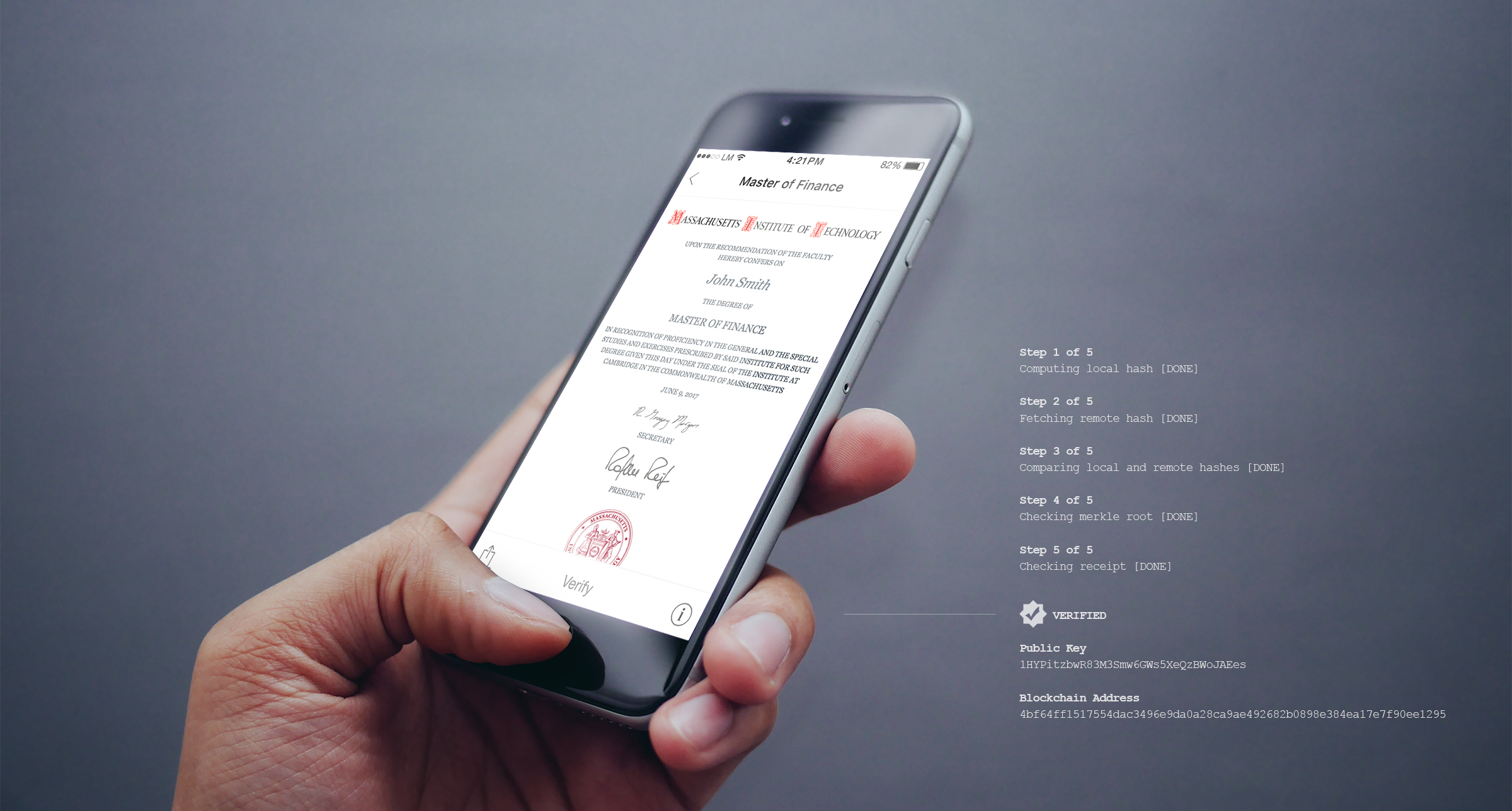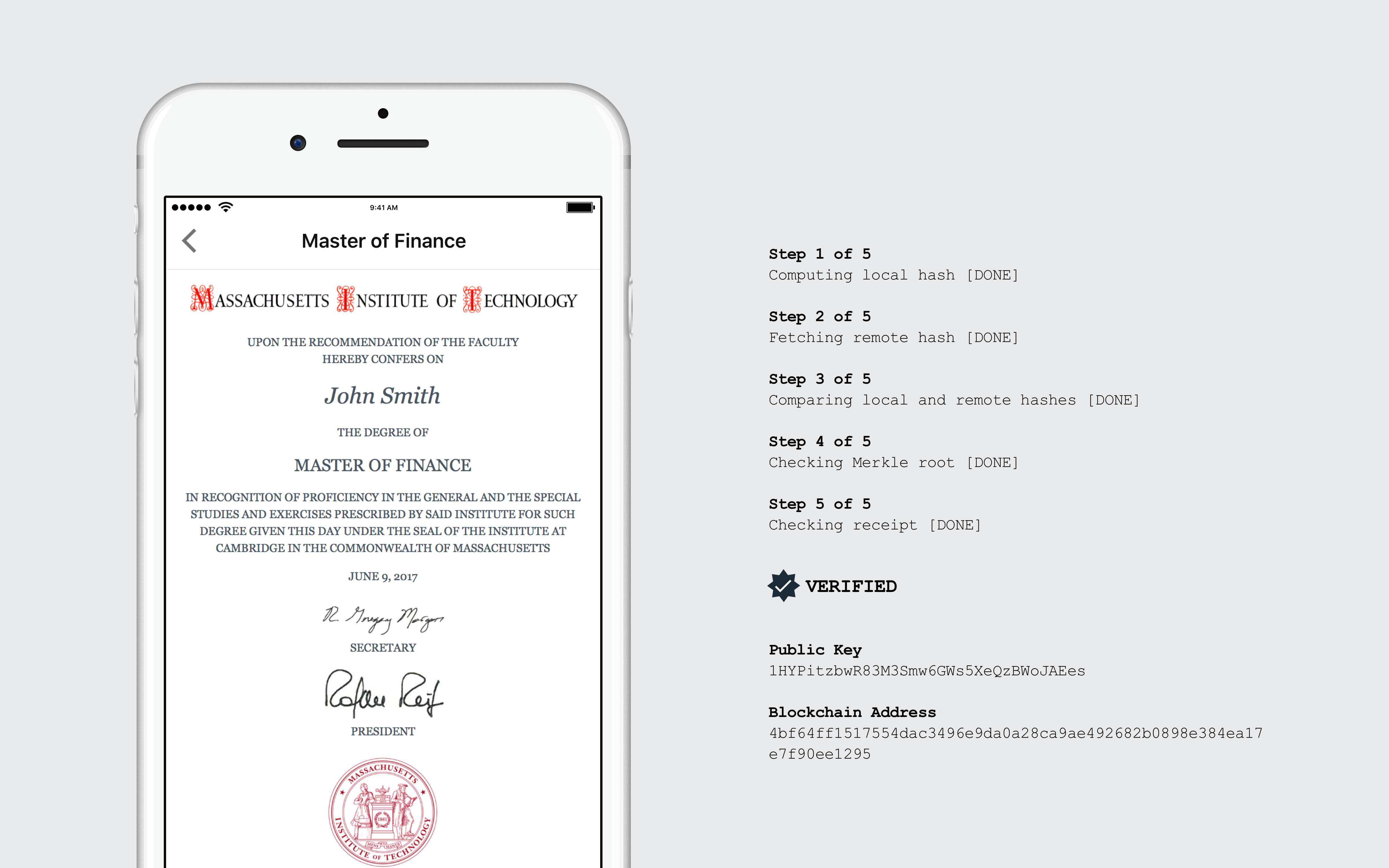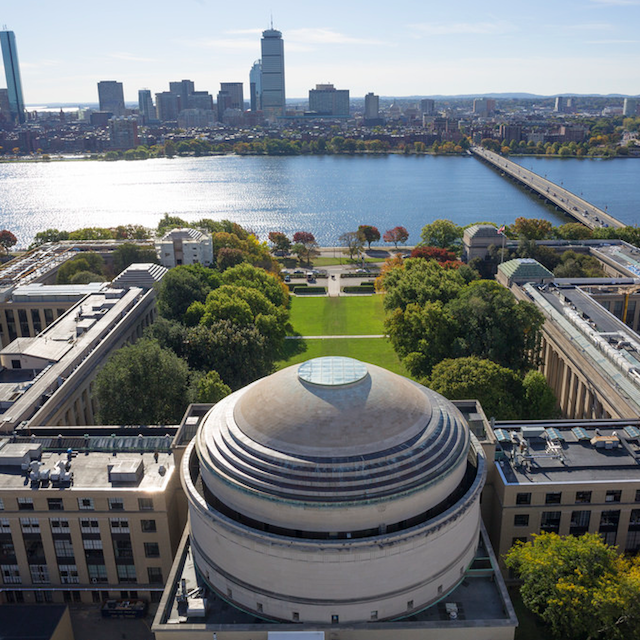Massachusetts Institute of Technology
Digital Diplomas
Launched
June 2017
Sector
Education
Partner
Office of the Registrar
Digital Diplomas
In 2017, MIT began issuing digital diplomas to select groups of students graduating within Undergraduate, Masters, and PhD degree programs. These tamper-proof records are registered on the Bitcoin blockchain, so they can be shared peer-to-peer and independently verified. The blockchain, combined with strong cryptography, provides a new security infrastructure that guarantees the authenticity of these records and enables convenient verification.
Learning Machine’s partnership with MIT began in 2016 to collaborate on developing Blockcerts, the open-source standard for blockchain based records. Later that fall, when MIT Registrar Mary Callahan became aware of the project, she recognized the opportunity to deliver on the promise of student owned records. Speaking to MIT News:
“It was the perfect confluence: technology developed at MIT and a vendor who was aware of MIT’s culture as a community that values learning, at a time when a comprehensive record of lifelong learning was an evolving need.”
The first step was ensure that the layout designer could recreate the official look of MIT’s historical diploma, which carries all of the historical signals for authenticity like seals and cursive signatures. While the blockchain supplies the true barrier to fraud, maintaining brand continuity and the signals of security was important for prestige and recognition.
The layout designer allowed MIT to add images, text, signatures, and variables — all forming a template that gets filled with data, like an email campaign. In the background, a content layer (JSON) was constructed that contains all of the diploma content and the recipient’s public key. This digital object gets hashed, signed by MIT’s issuing key, and anchored to the blockchain for later verification.

Student Experience
The process starts with an invite email requesting that students download the open-source mobile app (Blockcerts) for iOS or Android, and then add MIT as an issuer. The mobile app provides the most convenient way to generate keys, which are used to demonstrate ownership, and send their public key to MIT The app makes this as simple as adding a friend.
In addition to the standard security measures, the Institute wanted to add an additional layer of security to ensure the identity of students by asking them to login to the MIT identity system as part of this onboarding process.
Once diplomas were issued, they arrived to students by email as an attachment that can be stored anywhere. And importing that file into the mobile app provides a convenient way to view and share these records. MIT also decided to host these files, which makes them easy to share with just a link.
“From the beginning, one of our primary motivations has been to empower students to be the curators of their own credentials. This pilot makes it possible for them to have ownership of their records and be able to share them in a secure way, with whomever they choose.”
Mary Callahan, MIT Registrar

Verification
While any I.T. system can include a blockchain lookup service for verification, MIT provides an additional convenience by hosting a verification site at https://credentials.mit.edu, where any verifier can paste a link or upload a file to independently verify a diploma. This process works by using an open source blockchain lookup service (Blockcerts) to compare a compare the uploaded diploma to the hash stored on the blockchain. The power of decentralized verification is that both organizations could disappear and graduates would still be able to have their records verified.


